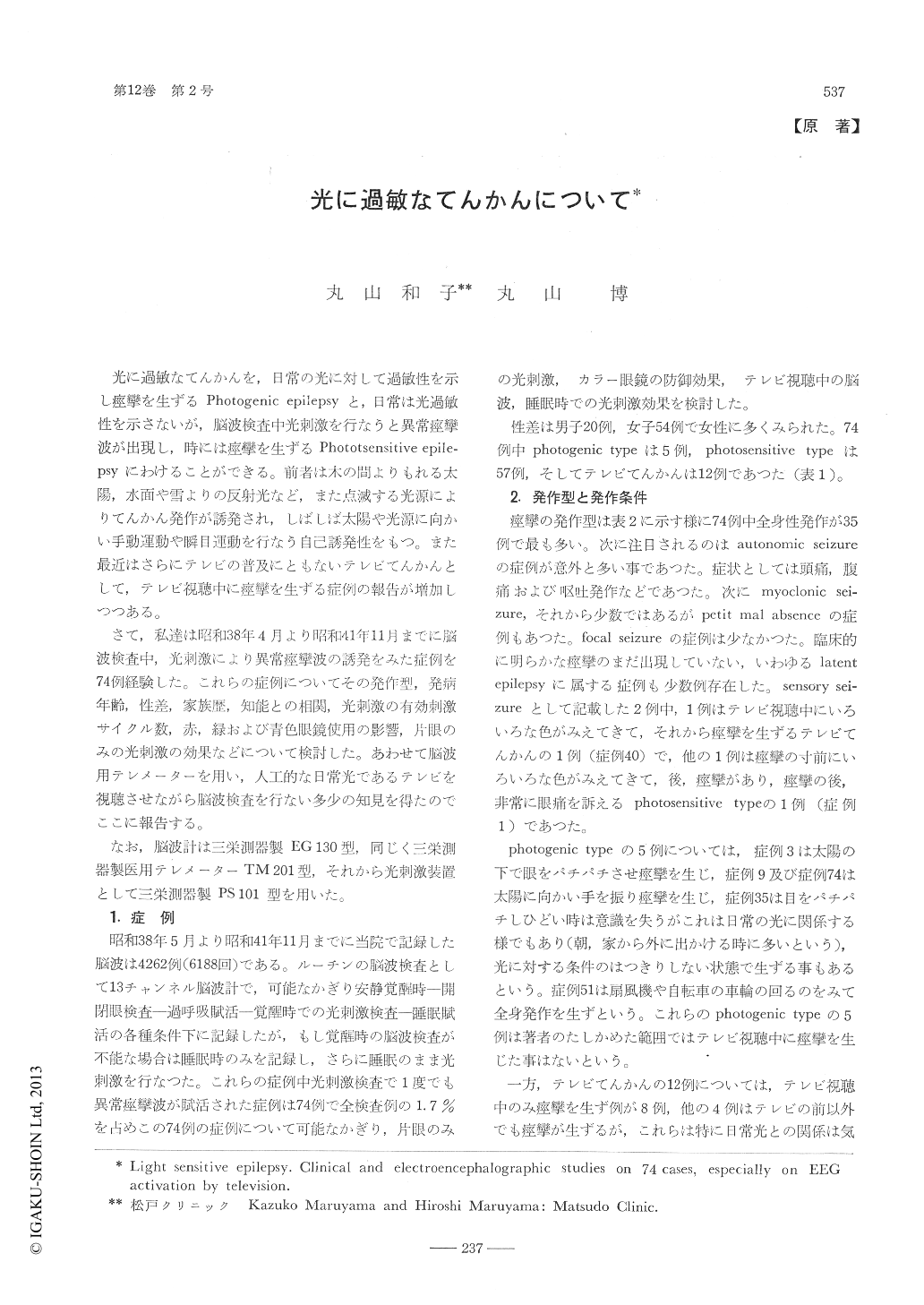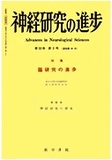Japanese
English
- 有料閲覧
- Abstract 文献概要
- 1ページ目 Look Inside
光に過敏なてんかんを,日常の光に対して過敏性を示し痙攣を生ずるPhotogenic epilepsyと,日常は光過敏性を示さないが,脳波検査中光刺激を行なうと異常痙攣波が出現し,時には痙攣を生ずるPhototsensitive epilepsyにわけることができる。前者は木の間よりもれる太陽,水面や雪よりの反射光など,また点滅する光源によりてんかん発作が誘発され,しばしば太陽や光源に向かい手動運動や瞬目運動を行なう自己誘発性をもつ。また最近はさらにテレビの普及にともないテレビてんかんとして,テレビ視聴中に痙攣を生ずる症例の報告が増加しつつある。
さて,私達は昭和38年4月より昭和41年11月までに脳波検査中,光刺激により異常痙攣波の誘発をみた症例を74例経験した。これらの症例についてその発作型,発病年齢,性差,家族歴,知能との相関,光刺激の有効刺激サイクル数,赤,緑および青色眼鏡使用の影響,片眼のみの光刺激の効果などについて検討した。あわせて脳波用テレメーターを用い,人工的な日常光であるテレビを視聴させながら脳波検査を行ない多少の知見を得たのてここに報告する。
In our three and a half years of electroencephalographic practice, 74 out of total 4262 cases(1.7%) were light sensitive, 20 were male and54 were female.
And their ages were from 3 yrs. 7 mos. to 47yrs.
These cases were classified by our criteria, 5were photogenic type, 57 were photosensitivetype, and 12 were television epilepsy. Main seizure type of these cases were generalized tonic-clonic convulsions (including abortive forms) 40, myoclonic seizures 9, sensory seizures 2, autonomic seizures 12, focal motor seizures 3, petitmal absence 4, and latent epilepsy 4.
All photogenic epilepsy cases showed photo-EEG activation even during sleep, but only aboutone fourth photosensitive cases and 42% of television epilepsy cases showed positive photo activation during sleep.
Most effective light stimulation was 14-18 c/s. EEG activation by means of television and television flickering was described and for this purposemedical telemeter was used, and EEG abnormalityin front of television was first showed in this report. Television seeing test positive cases andtelevision flickering test positive cases were 2 and3 out of 31 photosensitive cases, 3 and 3 out of9 television epilepsy cases and 0 and 1 out of 2photogenic cases, respectively.

Copyright © 1968, Igaku-Shoin Ltd. All rights reserved.


